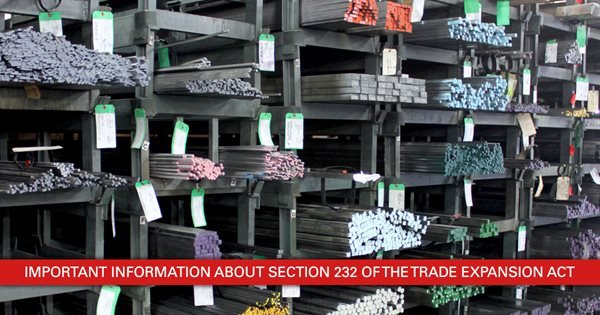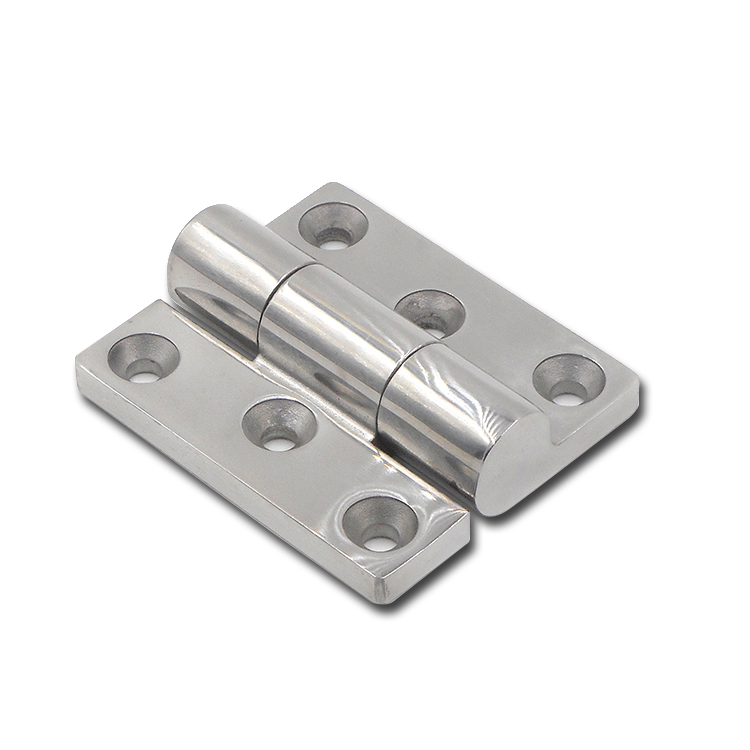
Steel and aluminum are significant cost inputs to the manufacturing of industrial fasteners, and so over the past couple of days I have researched carefully the background and facts in and around a proposal by the Trump Administration to impose tariffs on steel and aluminum. What follows here is a factual accounting so that fastener industry executives can manage against reality.
President Donald J. Trump was elected to execute an “America First” market orientation. Trump has surrounded himself with like-minded individuals and on November 30, 2016, he appointed Wilbur Ross to become United States Secretary of Commerce. Ross was confirmed by the Senate in a 72-27 vote on February 27, 2017. Ross made his fortune by buying bankrupt companies in manufacturing and steel. Forbes Magazine at one-time coined Ross the “King of Bankruptcy.”
Among Secretary Ross’ more notable achievements was his success at International Steel Group (ISG), which he founded in 2002. Ross purchased the assets of LTV Steel from bankruptcy and merged them with Weirton Steel. LTV was a conglomerate and the steel business consisted of old assets of Jones and Laughlin Steel Company as well as Republic Steel. In petitioning the bankruptcy courts and local politicians, Ross gained favor with the local steelworker’s union. Leo Gerard, the international president of United Steelworkers was quoted by National Public Radio as saying, “He (Ross) was open and accessible and candid and honest and he put a lot of money back into the mills, so literally tens of thousands of jobs were saved.” In 2003 ISG bought six plants from the defunct Bethlehem Steel Company in the Lehigh Valley of Pennsylvania. Bethlehem was dissolved and not merged into ISG. In 2005 Wilbur Ross sold International Steel Group to Mittal Steel Company (now ArcelorMittal) for $4.5 billion.
Given this history, it is not surprising that on April 19, 2017, just two months after confirmation, U.S. Secretary of Commerce Wilbur Ross initiated an investigation to determine the effect of imported steel on national security under Section 232 of the Trade Expansion Act. On April 26, 2017, Ross followed with the initiation of a similar investigation to determine the effect of imported aluminum on national security. Both actions were followed by a Presidential Memorandum the following day from President Trump to proceed expeditiously in conducting the investigations and reporting findings.
Section 232 provides the Secretary of Commerce with the authority to conduct investigations to determine the effect on the national security of the United States from imports of any article. It authorizes the Secretary to conduct an investigation if requested by the head of any department or agency, upon application of an interested party, or upon his own motion.
Section 232 filings are relatively rare, and the initiation of these filings by government personnel are even rarer. According to the “Section 232 Investigations Program Guide,” published June 2007 by the United States Department of Commerce, only twenty-six investigations have been conducted since 1962. Of those twenty-six, nine were initiated by the President of the United States or a member of the cabinet. The balance were requested by industry and trade associations.
The significant majority of Section 232 investigations have concluded that imports did not threaten to impair national security. The two most notable findings and actions were in 1979 when dependence on Iranian oil was deemed a threat, and President Jimmy Carter terminated oil imports from Iran; and in 1982 when the earlier 1979 report was validated, and President Ronald Reagan embargoed crude oil from Libya.
As a result of Secretary Ross’ instruction, and President Trump’s memorandum, investigative reports have been issued by the U.S. Department of Commerce’s Bureau of Industry and Security – Office of Technology Evaluation. “The Effects of Imports of Steel on the National Security” dated January 11, 2018, and “The Effects on Imports of Aluminum on the National Security” dated January 18, 2018, conclude that imports of steel and aluminum pose a national security threat. In both findings, Wilbur Ross’ team recommends imposing a tariff or quota on products covered in the investigation. Ross recommends a Global Tariff of 24% on steel; and 7.7% on aluminum.
As an alternative to a global tariff, Ross offers a tariff proposal on a subset of countries. For steel, the tariff would be 53% and apply to Brazil, South Korea, Russia, Turkey, India, Vietnam, China, Thailand, South Africa, Egypt, Malaysia, and Costa Rica. For aluminum, a tariff subset would be a rate of 23.6% on aluminum products from China, Hong Kong, Russia, Venezuela, and Vietnam.
On Thursday, March 1, 2018, President Trump assembled a group of business leaders in the White House and announced that Global Tariffs would be deployed as early as the week of March 5, 2018, at the rate of 25% on all imported steel and 10% on all imported aluminum. It should be noted that as of now, this is a verbal proclamation. The rates of 25% and 10% deviate from the Commerce Secretary recommendations at the discretion of the President. They are arbitrary rates. The global nature of the tariff is discretionary as well, with the Commerce Department Section 232 reports offering alternative and more country-targeted recommendations, along with an option of imposing quotas.
Thus, in assessing the implications of the Section 232 findings and the comments of the President, a word of caution is in order. Nothing is in writing yet and nothing has been declared as law or regulation. There is no question that these events have stirred interest and reaction globally. In the Section 232 reports “The Secretary recommends an appeal process by which affected U.S. parties could seek an exclusion from the tariff or quota imposed. The Secretary would grant exclusions based on a demonstrated: (1) lack of sufficient U.S. production capacity of comparable products; or (2) specific national security based considerations. This appeal process would include a public comment period on each exclusion request, and in general, would be completed within 90 days of a completed application being filed with the Secretary.” Thus, if these tariffs move to an actual operating reality, we can expect much political maneuvering to gain exemption and carve outs.
The most important question is “What products will be assigned the tariff?” While this too can become arbitrary based on executive order, we must reference the two Section 232 reports to see specifically what the Commerce Secretary reviewed to determine the national security threat. For steel, there are five broad groupings – Carbon and Alloy Flat Product; Carbon and Alloy Long Product, which includes bars and rods; Carbon and Alloy Tube Products; Semi-Finished Products such as billets and ingots that can be used to roll steel; and Stainless Steel in the same categories. The Harmonized Tariff Codes extend roughly from 7208-7306. Nearly all fastener finished products use a 7318 HS code. A complete list of the investigated steel products is listed on pages 22-23 of the report. The aluminum investigation looked at similar profiles in aluminum, but also considered wire and forgings. Aluminum HS codes were in the 7601-7616 range. A table is shown on page 20 of the aluminum report.
In summary, it appears less likely at present that industrial fasteners will be slapped with the tariffs. The cost of industrial fasteners will be affected directly if they are manufactured from imported material, to the extent of raw material cost to total cost to produce. Less-processed parts like pins and non-threaded products would tend to be affected more than highly-engineered fasteners where fabrication is the highest percentage of cost.
A greater affect is the emotional and market response of domestic steel producers. As importers of the affected products move to re-shore their steel supply chains, domestic steel production will be stretched to capacity, and more. As domestic steel producers move to raise prices, that will open the door for price increases abroad. The cost of finished steel products manufactured in the United States will stimulate greater import of finished goods, not covered by the tariffs. That will stimulate foreign steel producers to raise prices, which will increase the prices of finished goods – most notably industrial fasteners.
It is also possible that retaliation by America’s trading partners could affect the fastener industry, especially if you are an exporter, or have large exporting customers. Europe has already threatened to slap duties on Harley Davidson motorcycles, so if you are a supplier, you may be affected in the future.
In the end, it is not likely that this program will actually result in an increase in jobs in the steel industry. The Section 232 steel report notes, for example, that since 2000 the United States has lost six basic oxygen furnaces; with four more being idled. Some 35,000 jobs have been lost in the steel industry. How ironic that the six furnaces were lost when Wilbur Ross’s International Steel Group bought them from Bethlehem Steel in 2002, and allowed them to be taken down. Is this now an act of redemption?
President Trump tweeted on Friday, March 2, that “Trade Wars Are Good.” Some news accounts report that Trump selected the 25% and 10% tariff rates versus the 24% and 7.7% Commerce Department recommendations “because they sound more important.” Regardless, the fact that this tariff, if implemented, is unique historically, and some of these comments come across as impulsive. Because they likely will be grounded in executive orders, it is equally likely that they can be taken down or modified with future executive orders or congressional action. Thus, if you are a steel executive, would you invest billions to build new furnaces, knowing the temporary and perhaps impulsive nature of these tariffs?
Thus, for the fastener executive, the tariffs imposed on steel and aluminum, if they are imposed, pose risks to the supply chain and to inventory replacement cost. It is important to understand your supply chain and to calculate the cost of steel and aluminum as a percentage of total unit cost. Some specific action items might include:
- Development of alternate suppliers under contracted cost terms.
- Negotiation of index-based costing that allow for global price changes based on the cost of raw material.
- Review of sale contracts assessing force majeure provisions, especially where prices have been contractually fixed based on free market government orientation.
- Staff assessment to manage costs and inflation from among suppliers and customers alike.
Inventory inflation and its potential was present even before these events. Plant capacities in the fastener industry are strained and producers are increasing prices. The pending interest rate increases by the Federal Reserve pose the potential that inflation is here to stay. Over the past decade or more, pricing and purchasing teams in the fastener industry have been leaned out due to pricing stability. That is about to change.
While many can comment on the political and economic upheavals, as executives we must deal in reality. This is a new reality.
References and Links:
- “Section 232 Investigations Program Guide,” June 2007, United States Department of Commerce:
https://www.bis.doc.gov/index.php/forms-documents/section-232-investigations/86-section-232-booklet/file
- “The Effect of Imports of Steel on the National Security,” January 11, 2018, United States Department of Commerce, Bureau of Industry and Security, Office of Technology Evaluation:
https://www.commerce.gov/sites/commerce.gov/files/the_effect_of_imports_of_steel_on_the_national_security_-_with_redactions_-_20180111.pdf
- “The Effect of Imports of Aluminum on the National Security,” January 18, 2018, United States Department of Commerce, Bureau of Industry and Security, Office of Technology Evaluation:
https://www.commerce.gov/sites/commerce.gov/files/the_effect_of_imports_of_aluminum_on_the_national_security_-_with_redactions_-_20180117.pdf


